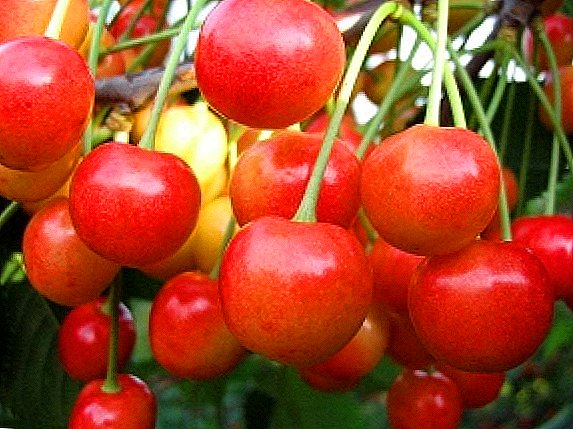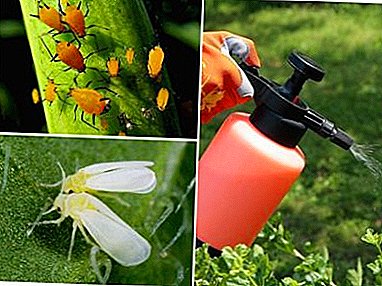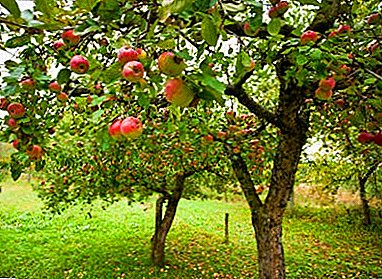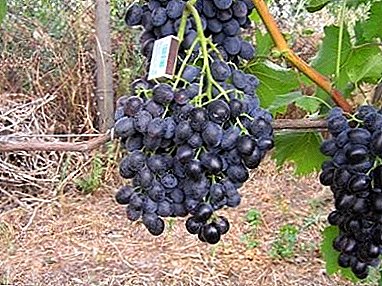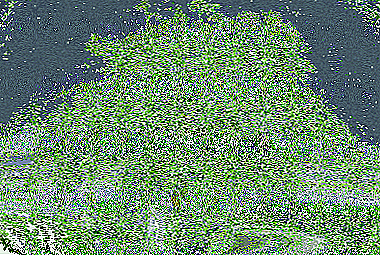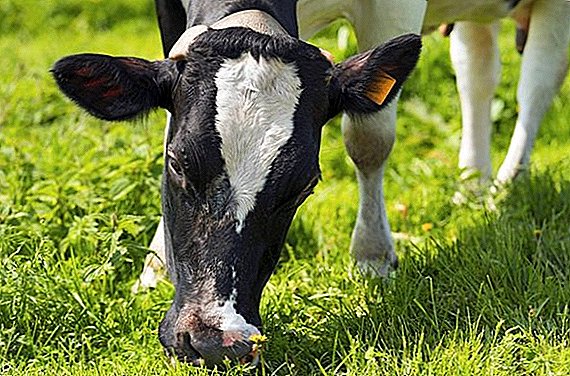 The dry period can be called a kind of "vacation" or "rest" for the cow from the main obligation to give milk. However, this stage is extremely important to bookmark further milk production, successful calving, the birth of healthy and strong offspring. Therefore, dry cows require even more attention than in other periods. One of the main aspects of caring for animals in the dead is feeding. We will discuss further the importance of the diet and its proper organization in heifers.
The dry period can be called a kind of "vacation" or "rest" for the cow from the main obligation to give milk. However, this stage is extremely important to bookmark further milk production, successful calving, the birth of healthy and strong offspring. Therefore, dry cows require even more attention than in other periods. One of the main aspects of caring for animals in the dead is feeding. We will discuss further the importance of the diet and its proper organization in heifers.
What is the dry period and how long does it take for cows?
The dry period is the last two months of pregnancy for which milking stops. For different individuals, this period may take from 45 to 70 days. Young or weakened females need more time before calving.  A shorter dry period affects the health of the cow, the condition of the fetus and future milk yield, and a longer period causes economic damage to the production or the farm.
A shorter dry period affects the health of the cow, the condition of the fetus and future milk yield, and a longer period causes economic damage to the production or the farm.
Did you know? During the pregnancy period, the cow's uterus increases by 20 times and by the time of the birth of the baby, its length is about 100 cm.
Pregnancy of a cow, as well as a person, lasts on average 9 months, while the first two thirds of the gestation period the pregnancy is almost imperceptible. It is in the last months that a sharp increase in fetal growth occurs - during this time the future calf increases in weight by 75-80%, which creates a heavy load on the animal itself.
With dry milking, the cows are stopped, and all the nutrients that were previously excreted with milk are now directed to the growth and development of the baby. The dry period is divided into an early (first 40 days) and a late, that is, transit period (approximately 3 weeks before calving). Nutritional and feeding requirements also vary in these segments.
The best breeds of dairy cows include such as Yaroslavl, Ayrshire, red steppe.
The importance of proper nutrition of pregnant cows
During gestation, especially in the last periods, the cow spends its own reserves of nutrients, minerals and vitamins. Two months before calving, animal metabolism is significantly accelerated (protein, lipid, carbohydrate, and mineral).  By the time of calving, the female should be sufficiently well-fed - for 2 months of dead wood, the cow's weight should increase by an average of 10-12%, that is, if the animal weighs 550 kg by the time of calving, the weight should increase by 55-65 kg. But in any case should not allow obesity of the animal!
By the time of calving, the female should be sufficiently well-fed - for 2 months of dead wood, the cow's weight should increase by an average of 10-12%, that is, if the animal weighs 550 kg by the time of calving, the weight should increase by 55-65 kg. But in any case should not allow obesity of the animal!
The best beef breeds include Hereford, Belgian, Aberdeen-Angus, Highland.
Proper feeding in the dry period allows you to successfully solve such problems:
- restoration of live weight, the accumulation of the required amount of nutrients;
- getting healthy, strong, viable offspring;
- obtaining high milk productivity of the cow;
- prevention of a number of generic, postpartum and other complications: mastitis, indigestion, postpartum paresis, etc .;
- strengthening the nervous, cardiovascular, endocrine systems;
- restoration of the body of an animal during lactation;
- production of high-grade colostrum, vital for the baby in the first days;
- increased follow-up fertility.
Did you know? All representatives of cattle almost do not distinguish colors. Therefore, the reaction of the bull to the red rag is explained not by its hue, but by its movement in the air.
Features of the diet and the rate of feeding of dry cows
As mentioned earlier, the dead wood is divided into two main periods: early and late (transit), which ends directly with calving. The nutrition of the cow at all stages will be different. Moreover, the diet of the animal must be adjusted in order for the dead wood to start.  In the early dead, the ration of the female cow consists mainly of hay of cereals and multivitamins, in the late dry dead and the first days after calving, silage and some concentrated feed are added to the hay.
In the early dead, the ration of the female cow consists mainly of hay of cereals and multivitamins, in the late dry dead and the first days after calving, silage and some concentrated feed are added to the hay.
The number of feedings per day is 2-3 times, and the daily rate should be calculated based on the individual characteristics of the animal:
- Weight. For every 100 kg of animal weight, one feed unit is required.
- Productivity. For every thousand milk yields required one feed unit.
- Fatness. To increase fatness, the daily rate is increased by 1-2 feed units.
In the 1st period (60-21 days before calving)
The dry period begins with the launch - the cessation of milking and the gradual transfer of the animal to a new diet. This means that within 7-12 days the cow needs to be transferred to a new food. In low-productive individuals, the launch occurs independently; for highly productive animals, human participation will be required.
First, the lunch milking stops, then the milk must be given out incompletely, stop doing udder massage. 14 days before the start of the dead, you should reduce the amount of silage in the diet by 20%, then gradually remove succulent feeds from the diet (grass, tops, silage, and root crops).  If the week before the onset of dryness, milk yield is not reduced or reduced slightly, it is necessary to remove concentrated feed from the diet. Otherwise, this is not necessary.
If the week before the onset of dryness, milk yield is not reduced or reduced slightly, it is necessary to remove concentrated feed from the diet. Otherwise, this is not necessary.
Important! You can stop the milking and start the dry period with the help of such drugs: Orbesil, Gamaret, Orbenin and others. But their use must be agreed with the veterinarian!
The diet in the first period is aimed at reducing and stopping milk production, replenishing the body of the cows with minerals and vitamins. At the same time, you need to strictly monitor the calorie and nutritional value of the feed so that the animal does not develop obesity.
The main groups of feed in this period:
- premixes;
- hay;
- straw;
- moderately silage;
- limited feed (0.5-1 kg).
In the 2nd period (21 days before calving - calving)
At this time, you need to slightly increase the nutritional value of feed, because part of the hay is replaced with cereal mixtures or feed.  Approximate daily ration of an animal weighing 550 kg with an annual yield of up to 5000 liters:
Approximate daily ration of an animal weighing 550 kg with an annual yield of up to 5000 liters:
- 12 kg of hay;
- 11 kg of silage;
- 4 kg of legume-cereal grain mixture;
- 2 kg of hay;
- 100 g of premix.
At the second stage it is impossible to prevent an excess of calcium in the diet, which threatens with postpartum paresis. This means that it is necessary to limit the feeding of red clover, alfalfa, and sugar beet tops.
Keep in mind that in the last days before an animal calving, an animal's appetite can be greatly reduced, because the cow should continue to eat, you need to feed attractive, fresh and tasty, and the feeding regime should be strictly observed.
You may also be interested to learn how to feed a calf, how to feed dairy cows correctly, what should be the diet of a sire bull.
What feed should not be given to pregnant cows
It is forbidden to give the following feed to females:
- cake and meal from cotton;
- feed with traces of decay, mold, soured or frozen products;
- juicy feed 10 days before calving (or reduce their number by 50%);
- limit salt intake to avoid puffiness or paresis.
 Other useful recommendations:
Other useful recommendations:- during the dry period the animal should have free access to the drinker;
- in warm weather, it is important to keep the animal outdoors for 8 hours;
- body cows cannot be tied up;
- barn for heifers should be clean, dry and light;
- the animal must be protected from stress.
Important! It is necessary to feed silage, hay and green fodder as a whole, unground.
Thus, one should not underestimate the importance of a properly formulated diet and feeding regime for cows in the last stages of pregnancy.
Deadwood is an extremely significant period, on the success of which will depend on the health and productivity of the cow, the flow of labor and the viability of the calf, and hence the economic benefits for the economy as a whole.
Therefore, livestock producers should pay special attention to the diet of the cows at this stage, ensure the most optimal conditions and not subject the animal to stress.


